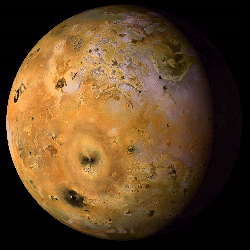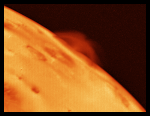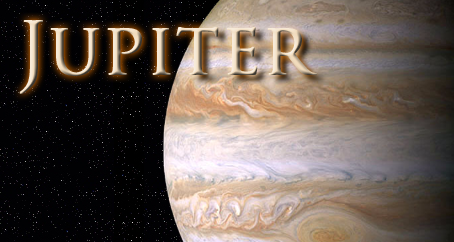Io, a moon of Jupiter

Io (pronounced "eye-oh") was discovered in 1610 by Galileo Galilei along with the three other Galilean satellites (Europa, Ganymede and Callisto) when he noticed four points of light orbiting Jupiter, the largest planet in the Solar System. There are at least 59 other moons orbiting Jupiter, although these appear to be small rocks like asteroids. Io is the first of Jupiter's large moons - the Galilean Moons - and is about 421,000 kilometres away from Jupiter. This is just slightly further away than Earth's Moon is from Earth. It is also slightly larger than Earth's Moon (Io is 3636 kilometres wide - Earth's Moon is 3475 kilometres).
What makes Io different to most other moons and also
to planets like Mercury, Pluto and possibly
Mars and Venus is that it is still volcanically active. In fact, the first
actual volcano eruption ever observed anywhere apart from on Earth was on
Io during the Voyager mission in 1979. Eight volcanic eruptions were seen on Io during
Voyager's visit to the moon,
making Io the most volcanic place in the Solar System. These volcanoes are caused because the centre of the moon is
so hot, despite it being so far away from the Solar System's main heat source, the
Sun. Jupiter has a very strong
gravitational pull on the moon. However, Europa and
Ganymede, the moons after Io, also have gravitational pulls
which both attract Io. This results in a tug-of-war happening between Jupiter,
Europa and Ganymede, causing friction
inside Io, the heating up of the inside of the moon, and the volcanic eruptions. It is a more intense version of the
gravitational pulling of the Moon and the
Sun on the Earth, causing its
tides.

The whole process on Io is known as 'Tidal Pumping.' The moon still has a freezing surface, about -143 °C although temperatures in lava lakes (lakes of lava pumped from under the moon's surface onto the surface from a volcano) measure up to 17 °C, showing that a moon so far away from the Sun can still be warm inside. The discovery that Io is still volcanically active tells us that Earth is not the only known living planet in the Solar System and that objects in the Solar System are still actually forming!
